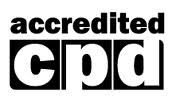Agenda
This session will provide you with the key legal and strategic considerations that are necessary to succeed on judicial review. Judicial review can provide a valuable opportunity to challenge decisions of arbitrators, tribunals and adjudicators in court. Whether you have received a decision that you want to challenge or you are responding to a judicial review application, it’s crucial that you know the unique legal and practical frameworks that apply.
- Breadth and scope of the JR remediesThis section will discuss the broad range of proceedings that are subject to judicial review by the court (e.g. labour arbitrations, federal and provincial human rights proceedings, federal and provincial labour boards, Canada Labour Code adjudications, etc.). We will also examine the potential limits on the availability of judicial review, including the principles of dismissal for delay and dismissal for prematurity. The section will close with a look at the remedies available on judicial review, including sending the case back to the tribunal or substituting a new decision.
- The JR processThis section will examine the key procedural steps in a judicial review application, and highlight the differences between this proceeding and other court proceedings. For example, we will discuss the very specific rules as to what evidence can be included in court filings on a judicial review application, the extent of permissible evidence about the hearing process, and the related issue of judicially reviewing a tribunal decision for lack of procedural fairness.
- Standard of review – reasonablenessThe predominant standard of review on judicial review is reasonableness. Understanding this deferential standard is key to determining whether a decision can be successfully judicially reviewed and/or how a decision can be defended on a judicial review. Therefore, we will closely examine the latest word from the courts on what this standard means and will help you determine whether a decision is unreasonable and whether to challenge it.
- Is there any correctness standard left?There is a narrow scope of decisions that can be reviewed for correctness, which is important because it means that the court will not defer to the tribunal’s decision. We will look at the law and will explain which decisions can be reviewed for correctness.
- How do you persuade a court on judicial review?A judicial review application requires arguments to be framed carefully to meet the standards of the court. This section will focus on strategy – e.g. you know what the tribunal decision says, you know that you want to challenge it, now how do you successfully mount a strategy to convince the court that the decision should be overturned? Conversely, if you are responding to a judicial review application, how do you convince the court that the decision should be left standing?
- ProfessionalismThis section will focus on ethical and professional issues that arise frequently in the judicial review context. We will have a panel discussion to examine the rules and share experiences. Among other things we will discuss: the role of the lawyer as advocate and the duty to treat the tribunal with courtesy and respect (Rule 4.01); encouraging respect for the administration of justice, even while challenging administrative decisions on judicial review (Rule 4.06); and, the duties and challenges of dealing with unrepresented litigants in judicial review applications (Rules 2.04(14), 4.01(6)).
 |
This program has been accredited by the Law Society for 0.5 Professionalism Hour |
